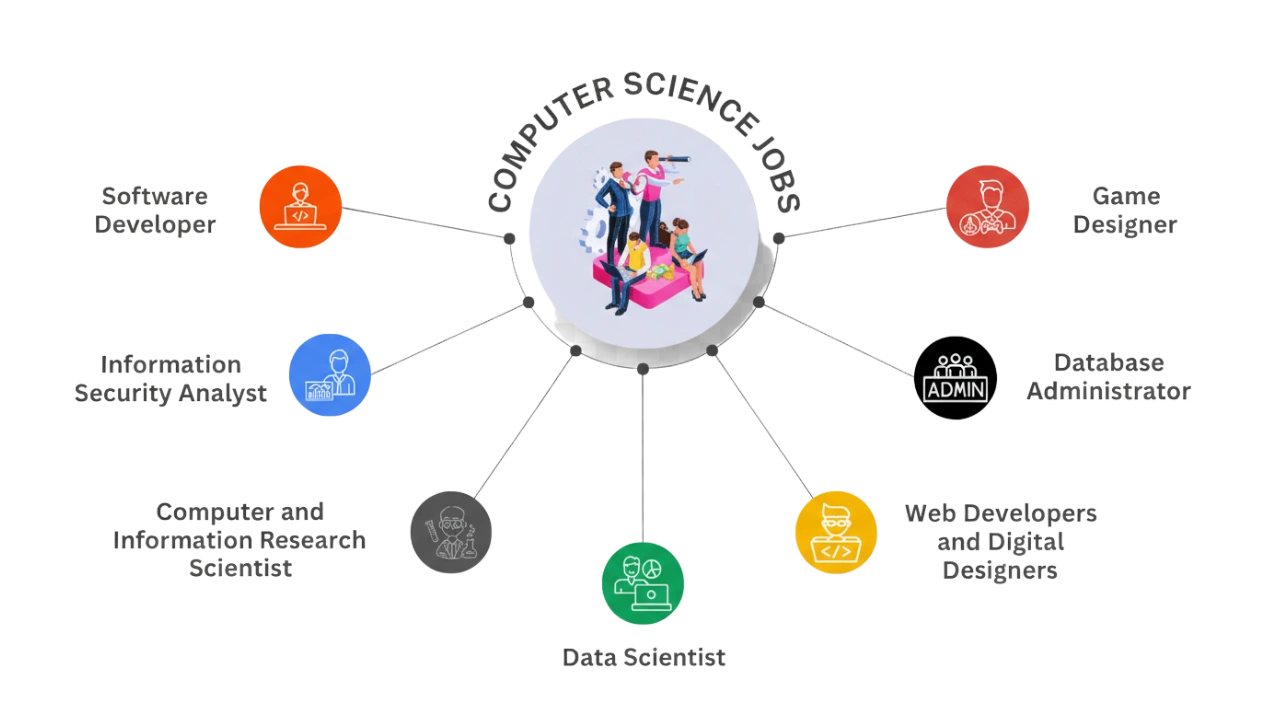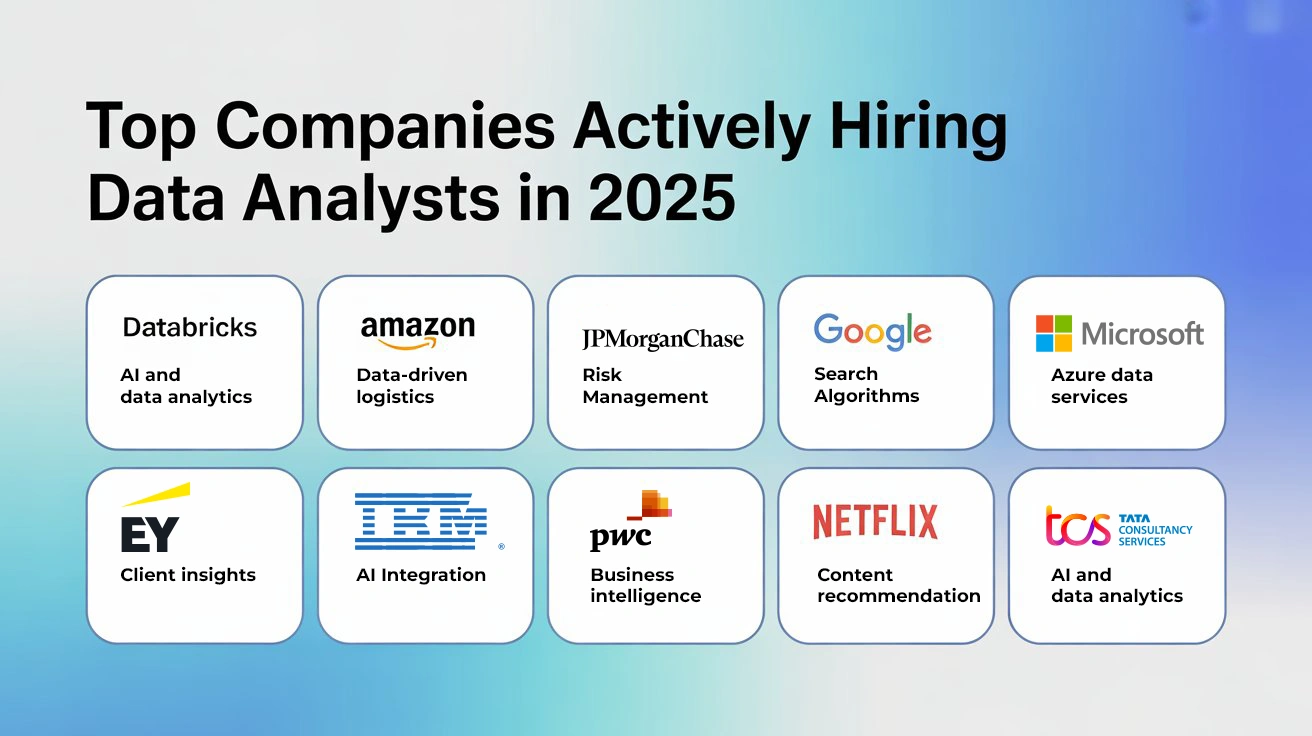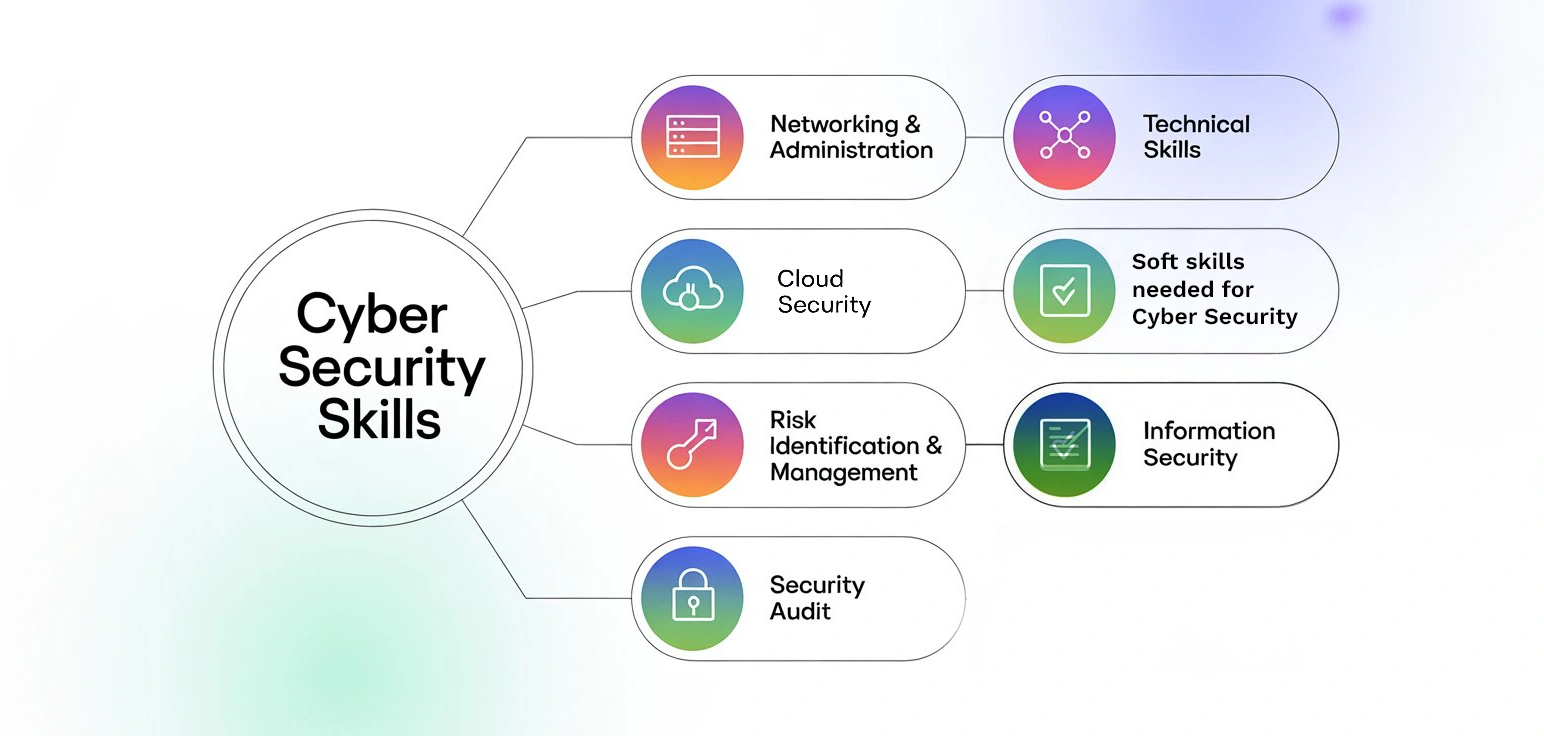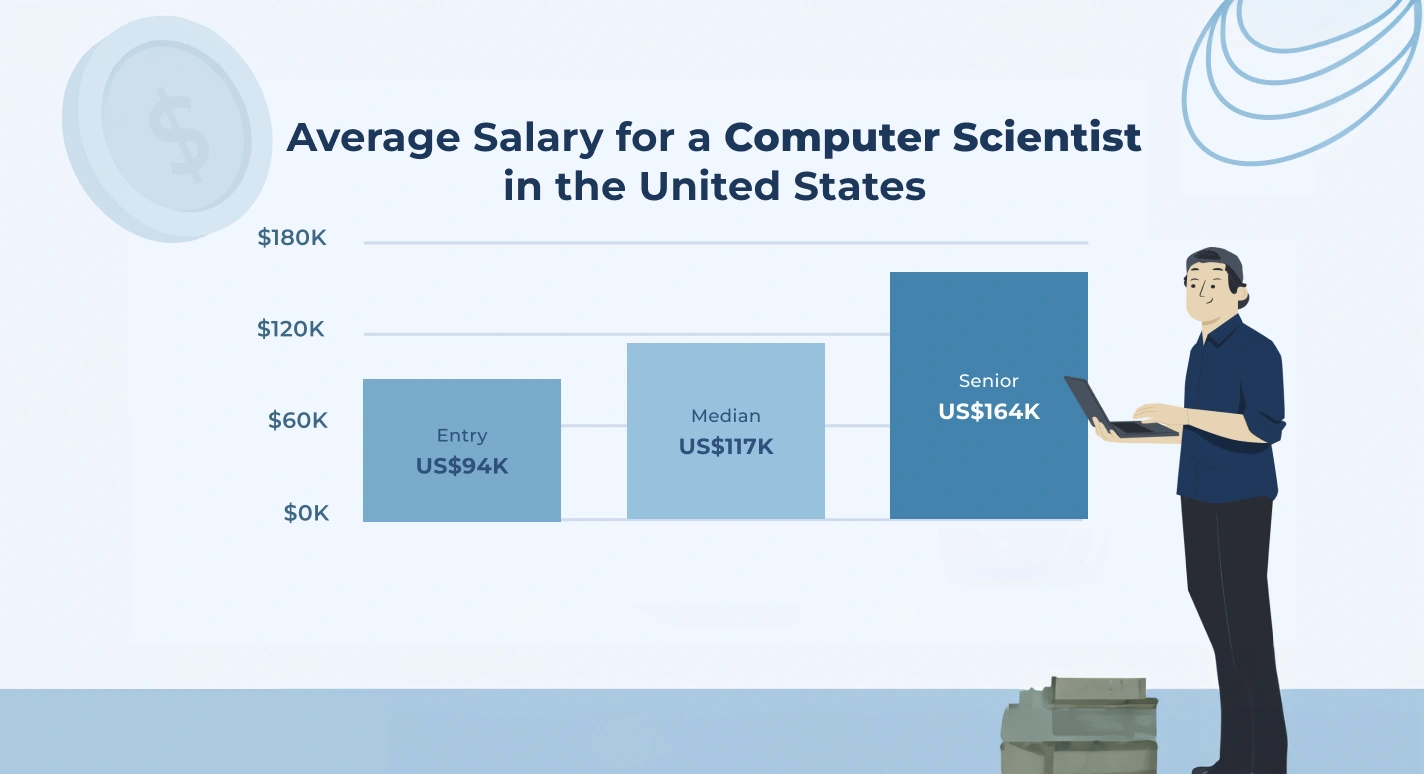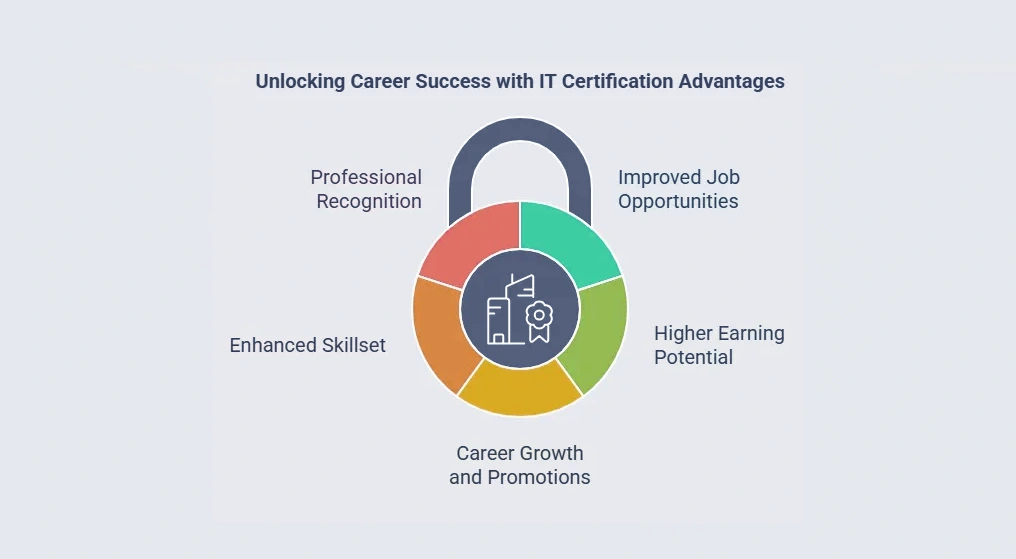Are you a recent computer science graduate or an aspiring tech professional looking to break into the booming world of technology ? With the U.S. Bureau of Labor Statistics projecting upward of 12.9% growth for computer and mathematical occupations this decade, entry-level computer science opportunities have never been more abundant or lucrative. In this detailed guide, we’ll explore the top 10 entry-level CS jobs for 2025, their roles, essential skills, and—critically—the current salary landscape. You’ll also discover how SynergisticIT’s career-driven Job Placement Program gives you a real edge, helping you connect with major tech employers and land high-paying jobs quickly.

Whether you’re ready to start building software, wrangle big data, protect networks, or build the next AI innovation, this post will reveal which CS careers are hottest, how much you can expect to earn, and how to fast-track your entry into this dynamic sector.
Summary Table: Top 10 Entry-Level Computer Science Roles and Starting Salaries (2025)
| Rank | Role Title | Brief Description | Average Starting Salary (USD) |
| 1 | Entry-Level Software Engineer | Designs/builds software applications | $85,000–$105,000+ |
| 2 | Junior Developer | Assists in coding, debugging, and feature dev | $70,000–$90,000 |
| 3 | Entry-Level Data Analyst | Analyzes, interprets, and visualizes data | $64,000–$80,000 |
| 4 | Entry-Level Data Scientist | Builds predictive models, works with big data | $88,000–$120,000+ |
| 5 | IT Support Specialist | Solves hardware/software/network issues | $55,000–$75,000 |
| 6 | Help Desk Technician | First-line tech support for end users | $42,000–$61,000 |
| 7 | QA Tester (Quality Assurance) | Tests software, reports bugs, ensures quality | $55,000–$70,000+ |
| 8 | Entry-Level Cybersecurity Analyst | Monitors/protects networks from cyber threats | $70,000–$120,000+ |
| 9 | Junior DevOps Engineer | Builds/dev CI/CD, automates infrastructure | $70,000–$100,000+ |
| 10 | Entry-Level Cloud Support Engineer | Solves cloud infra issues, supports client systems | $95,000–$130,000+ |
| 11 | Front-End Developer | Code’s website/app interfaces (HTML/CSS/JS) | $73,000–$101,000+ |
| 12 | Junior AI/ML Engineer | Implements and trains AI/ML algorithms | $71,000–$127,000+ |
*Note: Salary ranges reflect the national U.S. average for 2025 entry-level roles; top locations/industry/skill certifications can further boost these figures.
In-Depth Exploration: Top 10 Entry-Level Computer Science Roles in 2025
1. Entry-Level Software Engineer
Role Overview:
Entry-level software engineers are the architects of modern digital life. They design, code, test, and deploy software for everything from web apps to enterprise platforms and mobile apps. Teams rely on these engineers for translating user requirements into working code, debugging issues, maintaining systems, and collaborating through agile processes.
Core Responsibilities:
- Write, test, and debug code (common languages: Java, Python, C#, JavaScript)
- Work on feature enhancements and bug fixes
- Participate in code reviews and collaborative development
- Follow version control protocols (e.g., Git)
- Communicate progress in stand-ups/team meetings
Salary Range:
- Average starting salary: $85,000–$105,000 (national median varies by source)
- Location/skills premium: High; e.g., Silicon Valley often exceeds $110,000
- Top 10%: $120,000–$160,000+ in competitive regions/companies
Job Outlook:
The demand for software engineers remains sky-high—the BLS forecasts 25% growth for software dev roles through 2033, much faster than the overall labor market. Employers value proficiency in multiple languages, an eagerness to learn new frameworks, and the ability to quickly adapt to shifting requirements.
Why It’s Hot:
Virtually every tech-driven organization needs software engineers, whether they’re working on SaaS, fintech, health tech, or the next unicorn startup. Entry positions are abundant, and this role is often a starting point for more senior engineering, architecture, or product management positions.
2. Junior Developer
Role Overview:
A versatile entry-level job title, junior developers support more senior engineers in writing, testing, and maintaining code across the software stack. The title covers generalists and specialists in back-end, front-end, or full-stack development.
Core Responsibilities:
- Develop software modules following design specs
- Assist with testing, bug fixes, and documentation
- Pair program with senior devs or participate in peer reviews
- Frequently use Git, Jira, and other common dev tools
- Opportunity for rapid learning and progression
Read more: Top Skills For Junior Developers.
Salary Range:
- Average starting salary: $70,000–$90,000 nationally
- Urban tech hubs: $90,000+ routinely possible
Why It’s Hot:
The junior developer track is a launchpad into almost any software discipline. Skill growth is fast; many juniors advance to mid-level (and higher) within two years, especially by building strong portfolios and mastering in-demand technologies.
3. Entry-Level Data Analyst / Junior Data Scientist
Role Overview:
Data analysts and junior data scientists are today’s most sought-after entry-level analytics hires. They work with business data to uncover trends, build dashboards, assemble datasets, and provide actionable insights for organizational leaders. The evolving hybrid role (“junior data scientist”) often includes elements of both analytics and machine learning.
Core Responsibilities:
- Clean, preprocess, and analyze large datasets
- Build data visualizations/dashboards (using tools like Python, Tableau, SQL)
- Conduct basic statistical or predictive modeling
- Prepare presentations/reports for non-technical stakeholders
Salary Range:
- Data Analyst: $64,000–$76,000 (median to 75th percentile); top cities/companies $80,000–$90,000
- Junior Data Scientist: $88,000–$120,000+ in top tech companies or finance
Why It’s Hot:
Organizations in every industry are generating and consuming more data than ever—in finance, health care, e-commerce, logistics, marketing, and more. Data-centric entry-level roles are rapidly growing; the skills required also make them a strong bridge to more advanced data science or engineering jobs.
4. IT Support Specialist & Help Desk Technician
Role Overview:
These are foundational IT roles for newcomers eager for hands-on problem resolution. IT support specialists and help desk technicians field user tickets, troubleshoot software/hardware/network issues, and maintain day-to-day digital infrastructure.
Core Responsibilities:
- Provide tier 1/2 support via phone, email, remote access, or in-person
- Troubleshoot hardware/software/network issues
- Install or configure applications and operating systems
- Document incidents, resolutions, and recurring issues
- Train users on new systems or security practices
Salary Range:
- IT Support Specialist: $55,000–$75,000 (national average $69,237)
- Help Desk Technician: $42,000–$61,000 (median hourly $20–$27)
Why It’s Hot:
The backbone of any tech-driven enterprise, competent support pros are essential as more organizations rely on remote/hybrid employees and advanced cloud systems. These roles offer job stability and are a springboard to sysadmin, network engineer, or security analyst roles.
5. QA Tester (Quality Assurance Tester/Engineer)
Role Overview:
QA Testers ensure software is reliable, user-friendly, and (ideally) bug-free before it’s deployed to real customers. They may perform manual tests or work with automated test frameworks.
Core Responsibilities:
- Write, execute, and document test cases and test plans
- Use bug tracking/reporting tools (Jira, TestRail)
- Collaborate closely with developers to reproduce issues
- Participate in sprint planning to advocate for quality
- Optionally develop/maintain automated test scripts (Selenium, Cypress, etc.)
Salary Range:
- Average starting salary: $55,000–$70,000 nationally
Why It’s Hot:
As software complexity and release velocity increase, robust QA is foundational. The rise of automation frameworks and “shift-left” testing means today’s QA testers often evolve quickly to SDET (Software Development Engineer in Test) or QA automation engineer roles, offering salary growth and greater technical involvement.
6. Cybersecurity Analyst (Entry Level)
Role Overview:
Entry-level cybersecurity analysts monitor systems for unusual activity, analyze data breaches, evaluate vulnerabilities, and assist with security incident response. Demand for cyber professionals is skyrocketing, with a global shortage of skilled talent.
Core Responsibilities:
- Monitor network, server, and application logs for suspicious patterns
- Assess vulnerabilities using scanning tools
- Participate in incident response, investigations, and reporting
- Maintain/uphold compliance standards (e.g., PCI DSS, NIST)
- Educate staff about cyber hygiene and social engineering risks
Salary Range:
- Median starting: $70,000–$120,000+ (national median $118,090)
- Certifications: CISSP, Security+, CEH add 10-20% premium
- Finance/critical infrastructure: Higher pay up to $140,000+
Why It’s Hot:
With cyberattacks, ransomware, and phishing threats more prevalent than ever, cybersecurity provides outsized job security, rapid pay progression, and high impact. Many entry professionals advance quickly by achieving certifications and hands-on experience.
7. Junior DevOps Engineer
Role Overview:
Junior DevOps engineers play a key role in the new paradigm of rapid, automated software delivery. They help implement CI/CD (continuous integration/continuous deployment) pipelines, automate infrastructure, and foster collaboration between development and IT operations.
Core Responsibilities:
- Develop and troubleshoot build/release pipelines
- Automate environment setups and deployments using scripting (Python, Bash)
- Deploy and monitor cloud resources (AWS, Azure, GCP)
- Apply infrastructure as code (IaC) practices (Terraform, Ansible)
- Learn and implement containerization (Docker, Kubernetes)
Salary Range:
- Average starting salary: $70,000–$100,000+
- Major metro areas: $100,000+ for entry positions
Why It’s Hot:
The explosion of cloud-native and agile methodologies means organizations need DevOps skills for reliability, scalability, and automation. Junior hires often participate in critical production work within their first year, accelerating skill growth and advancement toward SRE (Site Reliability Engineering) roles.
8. Cloud Support Engineer
Role Overview:
These professionals manage and troubleshoot cloud infrastructure, applications, and services. They are critical to enterprises running on AWS, Azure, GCP, Snowflake, and other platforms.
Core Responsibilities:
- Provide support for cloud operations, deployments, and issues
- Manage incidents in cloud infrastructure (IaaS/PaaS/SaaS)
- Develop scripts and automation for scaling, monitoring, and backup
- Maintain documentation and compliance in multi-cloud environments
Salary Range:
- Average starting salary: $95,000–$130,000+ (national mean: $122,562)
- AWS/Azure certified: Upwards of $140,000 possible
Why It’s Hot:
Everything is moving to the cloud, so the need for cloud support engineers has exploded. The role offers rapid exposure to core concepts in automation, security, and distributed systems, with a clear growth path to cloud architect and engineering specialist positions.
9. Front-End Developer
Role Overview:
Front-end developers bring web and app interfaces to life for end users. They specialize in creating interactive, visually engaging client-side experiences using HTML, CSS, JavaScript, and popular frameworks.
Core Responsibilities:
- Build responsive website/app interfaces (HTML/CSS/JS)
- Use frameworks like React, Vue, or Angular
- Optimize for performance, SEO, accessibility
- Collaborate with UI/UX designers, back-end developers
- Debug and troubleshoot issues in browser environments
Salary Range:
- Average starting salary: $73,000–$101,000 (national mean $101,548)
- Premium for React/TypeScript or Next.js: $110,000+ in large markets
Why It’s Hot:
As consumers spend more time interacting online, front-end skills are crucial. Businesses across all sectors value developers who can translate design into snappy, pixel-perfect, and accessible user experiences.
10. AI/ML Junior Developer
Role Overview:
AI/ML junior developers leverage machine learning libraries and frameworks to build, train, and fine-tune models for real-world applications—from NLP to computer vision to recommendation systems.
Core Responsibilities:
- Assist in data pre-processing and cleaning for ML pipelines
- Train and test models using TensorFlow, PyTorch, scikit-learn
- Conduct statistical analyses, evaluate model performance
- Work with data engineers on end-to-end ML deployment
- Stay current on new algorithms and model frameworks
Salary Range:
- Average starting salary: $71,000–$127,000+ (median: $127,337; 90th percentile $147,000+)
- FAANG/startup premium: $130,000–$160,000+
Why It’s Hot:
With industries rushing to implement AI/ML in their products, junior engineers are snapped up quickly—often with base salaries surpassing peers in other CS roles. This field is evolving rapidly, blending engineering and research, and it demands commitment to ongoing learning.
Real Salary Insights: What Do Entry-Level Computer Science Graduates Really Earn in 2025?
Let’s contextualize these salary figures with up-to-date national data, highlighting key salary insights and variables:
- National average for all Entry-Level Computer Science – $45,973 (across all titles and U.S. markets)
- Tech hubs like San Francisco, New York, or Seattle: $10,000–$25,000 higher across most roles
- Certifications: (AWS, Security+, Azure, CompTIA, etc.) can add 10–20% to starting offers
- Relevant project/portfolio work: Demonstrable skills in real-world projects are increasingly weighted over GPA or school pedigree
The “floor” for entry is now well above $60,000 in most cities for technical roles; premier employers regularly offer $90,000–$120,000 for in-demand skills. Non-coastal/remote roles may trend slightly lower, but the remote work revolution has equalized much of this difference, as long as candidates bring modern skills and a strong project portfolio.
The SynergisticIT Advantage: How the Job Placement Program Fast-Tracks Your Tech Success
When it comes to moving from a CS graduate to an employed tech professional, the gap between university learning and real-world job requirements often leaves new grads struggling to stand out. A recent Wall Street Journal–NORC poll reports that only 11% of employers feel recent grads are fully job-ready, with technical and soft skills misaligned to business needs.
Here’s where SynergisticIT’s Job Placement Program (JPP) excels:
1. Industry-Focused Technical Upskilling
- Hands-on, instructor-led training: Covering high-demand stacks like Java, Python, cloud (AWS, Azure), DevOps, data science, ML, and full-stack development—using real industry projects
- Cutting-edge curriculum: Continuously updated through feedback from thousands of tech clients and participation in major industry events (Oracle CloudWorld, JavaOne, Gartner Summit)
2. Career Support and Mentorship
- Personalized mentorship: Small class sizes and experienced instructors (10+ years average experience) provide project guidance, live feedback, and career planning
- Mock interviews & behavioral coaching: Over 5,000 real interview questions and deep behavioral prep help polish your elevator pitch and negotiating skills
3. Employer Network and Resume Marketing
- Network with 24,000+ clients: SynergisticIT actively markets your resume to thousands of employer partners, including Google, Apple, PayPal, Cisco, Deloitte, Bank of America, SAP, and more
- Direct interview placement: Many candidates land their first full-time offers through SynergisticIT introductions, not through job boards or cold applications
4. Certification Preparation—At No Additional Cost
- Industry accreditations: Preparation for certifications from Oracle, AWS, Microsoft, IBM, and more, boosting employer appeal and increasing starting offers
- Value: Many bootcamps charge $2,000–$5,000+ for certification add-ons; SynergisticIT includes it in their core curriculum
5. Real Results & ROI: Higher Salaries, Faster Hires
- Salary outcomes: Average starting salaries for SynergisticIT Job Placement Program grads are $81,000–$150,000, with $85,000 as a median starting point—well above the $50,000–$70,000 bootcamp or university average
- Placement rate: 91.5% of program completers secure a full-time role, many landing jobs within six weeks post-program
- Return on Investment: Typical total investment is $36,000 (€10k upfront, remainder only after securing an $81k+ job)—far less than the $120,000–$300,000 cost of a CS degree from top universities, with much faster ROI and earlier career earnings
6. Continuous Support
- 12 months of on-the-job support: Get help even after landing your new job—a rare benefit among tech training providers
- Remote delivery: Full program available anywhere in the U.S. or Canada, complemented by recorded sessions for maximum flexibility
Explore SynergisticIT’s Video Library and Placement Results Here!
See event recaps: SynergisticIT at Gartner Data and Analytics Summit 2023, SynergisticIT at Oracle Cloud World, Las Vegas 2023
Compare outcomes: Job Placement Program ROI vs. Colleges.
Read alumni stories: SynergisticIT Candidate Outcomes.
Why Choose SynergisticIT vs. a Traditional College Degree or Bootcamp?
| Aspect | Traditional CS Degree | Typical Bootcamp | SynergisticIT Job Placement Program |
| Duration | 4 years | 12–24 weeks | 5–7 months |
| Tuition | $80,000–$250,000+ | $15,000–$20,000 | $10,000 upfront + $26,000 after $81k job |
| Certification Prep | Not typical | Often an extra $2–5k | Included |
| Placement Support | Limited career services | Some, varies | Resume marketing, direct interviews, 91.5%+ |
| Average Starting Salary | $65,000–$85,000 | $55,000–$70,000 | $81,000–$150,000 |
| Market-Driven Curriculum | Slow to update | Somewhat current | Updated with industry feedback and events |
| Duration to Land a Job | 6–12 months (avg) | 3–6 months (avg) | 6 weeks (avg for completers) |
| On-the-Job Support | No | Rarely | Yes, 12 months included |
Explanation:
- SynergisticIT’s model favors fast entry to the market, industry-led curriculum, and a clear focus on what current tech employers want—verified by their hiring clients and ongoing event participation.
- The “pay after you’re hired” model minimizes risk, and the inclusion of cert prep and real-world project portfolios positions candidates for roles with above-market salaries.
- Real-world mentorship, not prerecorded-only content, ensures hands-on skill mastery.
Alumni Successes & Recent Placements
SynergisticIT’s effectiveness is anchored by thousands of success stories. Recent alumni have landed roles at top-tier organizations (Google, Apple, Cisco, Deloitte, Bank of America, SAP, Intuit, Ford, PayPal, Walmart Labs) as software engineers, data scientists, backend devs, cloud engineers, and more.
Many alumni who previously attended other bootcamps—without getting jobs—reported landing their first U.S. tech job with salaries up to 30% above their peers post-SynergisticIT placement. Their client network and recruitment engine remain an unrivaled asset for breaking into the most competitive segments of tech.
Insider Career Tips for CS Graduates in 2025
1. Portfolio Matters Most:
Demonstrate your proficiency through deployed projects, not just your degree or transcripts. Employers increasingly hire for skills over credentials.
2. Elevator Pitch Proficiency:
In a market where first impressions are decisive, SynergisticIT emphasizes elevator pitch mastery for its candidates—tailoring your story, skills, and unique contributions to impress in interviews and networking.
Read more: Mastering Tech Elevator Pitch
3. Continuous Learning & Certification: The era of static skillsets is over; the best entry-level hires earn certifications (Python, AWS, Java, Security+) and keep their learning agile.
4. High ROI Pathways:
Evaluate programs not just for tuition, but for their true ROI: what percentage of grads land jobs, and how quickly? What are the documented starting salaries for completers?
Final Thoughts: Your Next Step in Tech Starts Here
2025’s CS job market is both competitive and full of opportunity. Whether you aspire to launch as a software engineer, work at the cutting edge of AI, become a vital data scientist, or safeguard systems as a cybersecurity pro, starting your journey with the right training and connections is vital.
What sets top CS candidates apart? It’s not just raw coding skill, but readiness, confidence, and the ability to translate knowledge into on-the-job results.
SynergisticIT’s Job Placement Program is uniquely positioned to bridge academic knowledge and real-world employment with better-than-average salaries, a vast employer network, and robust technical mentorship. From hands-on training to strategic employer marketing and post-placement support, their results speak for themselves.
Ready to take the next step?
- Learn more about SynergisticIT’s Job Placement Program.
- Read program success ROI
- Watch real-life events and industry videos
- Check out candidate outcomes and alumni testimonials
- Dive into SynergisticIT’s latest job-seeker blogs
Your tech career is one investment that pays exponential dividends—with the right launchpad, you’ll land not just a job, but a pathway to growth and prosperity in one of the fastest-growing industries of the modern era.
Are you ready to let SynergisticIT help you get hired for the highest-paying entry-level computer science jobs in 2025? Let your tech career transformation begin!


